BIOS X2
The ECS PF88 Extreme's BIOS is a unique setup in that it has to cater for both Intel and AMD CPUs. When using either brand of CPU and appropriate BIOS, we see the following Phoenix AwardBIOS page.
With respect to Intel CPUs, let's trundle on over to the frequency/voltage section first.

CPU ratio only presents itself when using unlocked/engineering sample Intel-based processors. I found it impossible to run with anything other than the default multiplier. More of an early BIOS issue than anything else. CPU Front-Side Bus can be set, with respect to a 200MHz FSB CPU, to anything between default and 450MHz. Further, the PCI bus can be locked to ensure that peripherals don't hinder overclocking efforts. PCI-Express speeds aren't expressly stated, though. CPU-to-DRAM ratios need to be doubled in order to correspond to what we're used to with other boards. For example, most i925XE's can be set to DDR533 using a 3:4 ratio. ECS, however, states DRAM frequency in DDR terms, so the same setting is achieved via a 3:8 ratio. Others available are SPD, 3:4 (DDR266), 3:5 (DDR333), 1:2 (DDR400), and 3:10 (DDR667, or SPD in the case of Crucial Ballistix DDR2 PC5400 RAM). ECS also offers up to 0.075v extra juice for the CPU and 0.15v extra for DDR2. I'd liked to have seen extra adjustment on both lines, really.
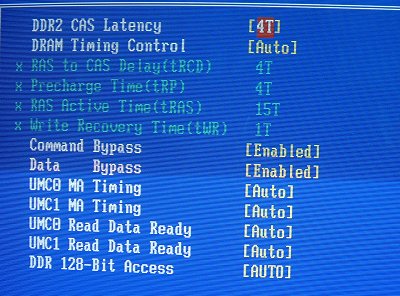
Intel-based DRAM control was best left at default settings, which translated into 4-4-4-12 timings at DDR533 speeds.
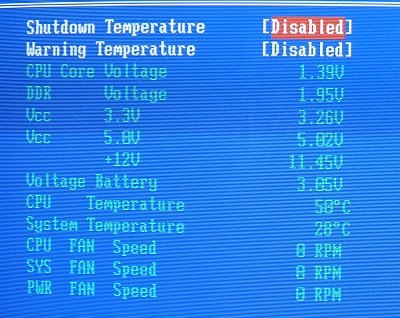
A relatively low 12v line didn't impact upon board stability in any way. Voltages were consistent as any other board's, too.
AMD BIOS
It will come as no surprise that the PF88 Extreme uses a second BIOS that's used in conjunction with the A9S add-in, AMD-supporting card. Firing up the board with card, CPU and DDR1 in place shows, expectedly, a BIOS geared up towards S939 CPUs.
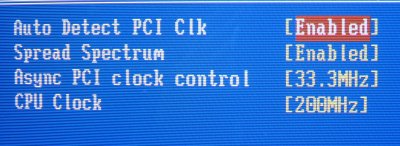
Note the lack of parameter adjustment compared to the Intel's. There's no CPU or DDR voltage manipulation, although that may appear in later BIOSes. It's probably a sensible approach by ECS, given that AMD S939 CPUs are run off an additional card and not the motherboard itself. FSB frequencies range from 200MHz-232MHz, so it's not aimed at the enthusiast, either.
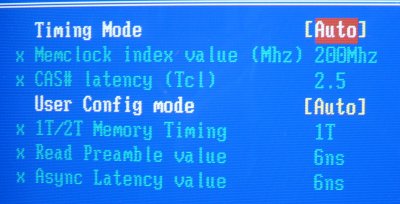
There's a reasonable degree of DDR parameter adjustment. Running with a couple 512MB Corsair's XMS3200XL sticks and leaving the settings on auto gave SPD timings of 2-2-2-5 1T, perfect for low-latency accesses.
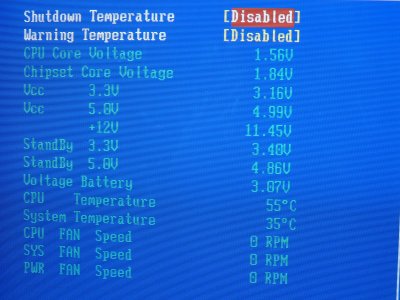
Using an original S939 cooler pushed up an FX-53's BIOS CPU temperature to 55c. Windows' load hovered at around 63c. Hot but not hot enough to prejudice results in any way. Heat is something that ECS will need to keep a close eye upon, especially when running with FX-55 or dual-core CPUs. The odd socket positioning, relative to most motherboards', didn't impact upon stability at all.









